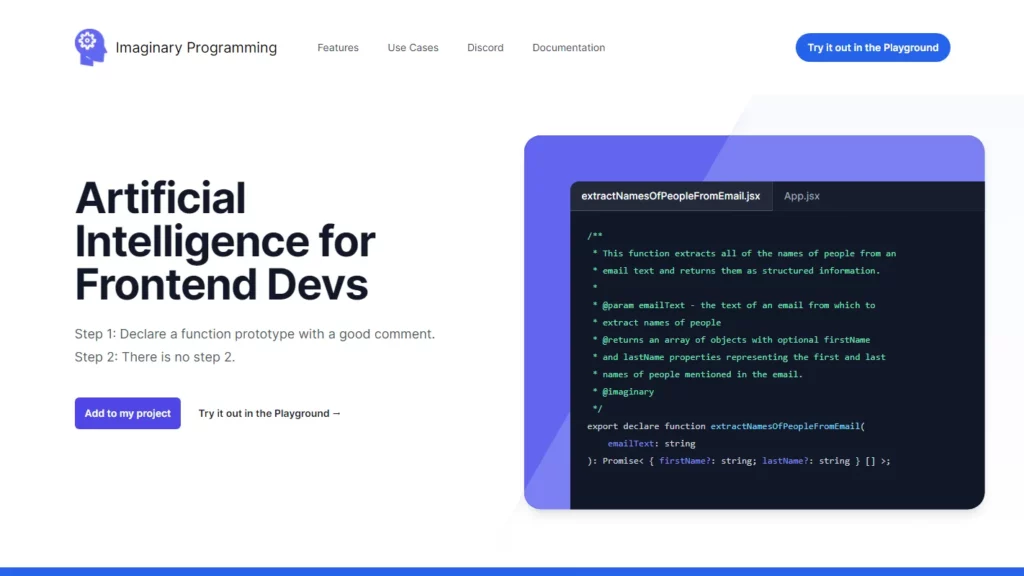Imaginary Programming is a platform that allows developers to leverage artificial intelligence (AI) capabilities without needing extensive knowledge of AI development. It enables frontend developers to use OpenAI’s GPT engine as a runtime by defining function prototypes in TypeScript without implementing the logic themselves. The platform offers various functionalities such as generating useful titles and text, classifying data based on semantic intent or emotions, and parsing structured data from unstructured language. Developers can use Imaginary Programming with Node.js, Next.js, and React projects. Additionally, there is an online playground available for testing and experimenting with imaginary functions without installation.
⚡Top 5 Imaginary Programming Features:
- Function Prototypes: Define function prototypes without implementations and let Imaginary Programming handle the rest.
- TypeScript Integration: Easily integrate Imaginary Programming into your existing TypeScript projects.
- OpenAI’s GPT Engine: Utilize OpenAI’s powerful GPT engine to enhance your code capabilities.
- Livecoding Screencasts: Learn through interactive tutorials on how to use Imaginary Programming effectively.
- Online Playground: Experiment with Imaginary Programming without installation by trying it out in the online playground.
⚡Top 5 Imaginary Programming Use Cases:
- Generating Titles and Text: Generate useful titles and text for users based on their needs.
- Data Classification: Classify data using human-like intelligence to understand the semantic intent or emotions within the text.
- Structured Data Extraction: Extract structured data from unstructured language by telling Imaginary Programming what type of data you’re looking for.
- Real-time Feedback: Receive instant feedback on your code performance and improvements.
- Collaborative Learning: Share knowledge and learn together with other developers through community resources and events.















